Let’s explore the intriguing world of azuki beans, which have shaped global cuisine and health. They have strong roots in Japanese culinary traditions, playing a versatile role in sweet and savory dishes. Whether you like to eat or are just interested in different tastes, the azuki bean’s story is interesting and tasty, giving you joy and nutrition.
Red beans have become an intriguing ingredient, especially in Asian cuisines. Their distinctive flavor profiles lend a sweet nutty essence to various desserts and dishes. But what exactly gives red beans their signature taste? As a food blogger exploring new ingredients I set out to uncover the mysteries behind red bean flavor.
Tracing the Source of Red Beans
Red beans refer to beans from the adzuki plant, scientifically termed Vigna angularis. They have been cultivated in East Asian regions like China, Japan, and Korea for centuries. Their use can be traced back to the 8th century BC in food items across these cuisines
The adzuki bean pods contain small, oval-shaped red beans. Unlike common beans, adzuki beans have a very low fat content. Their composition is approximately 65% carbohydrates, 25% protein, and only 1% fat. This nutritional profile contributes to their sweet taste.
How Are Red Beans Processed?
Red beans are processed in various ways to make products like red bean paste, powder, and red bean rice. The most popular is red bean paste or anko, commonly used in Asian desserts and sweets like dango, manju, and taiyaki.
To make anko, dried adzuki beans are boiled until soft and then mashed into a paste. The paste is cooked again with sugar and sometimes oil or lard, resulting in a sweet, thick mixture with a smooth, creamy texture.
Unraveling the Flavor Profile
Now that we know what goes into making red bean products, let’s break down their taste.
Sweet Notes
Sugar is added while cooking red beans to counter their natural savory flavor. This gives red bean paste a sweet taste, but it is subtle compared to the strong sweetness of sugar or chocolate. The sweetness balances out the beans’ earthy essence.
Nutty Undertones
Red beans have mild nutty notes, similar to almonds or chestnuts. It adds a richness that plays off the sweetness. You can sense the nuttiness if you pay attention when eating red bean desserts. This comes directly from the beans.
Smooth Texture
The smooth, creamy paste consistency also indirectly impacts the taste. The finesse of the texture allows the sweetness and nuttiness to shine through. Red beans prepared as a chunky paste or with whole beans will have a grainier mouthfeel and taste.
Asian Essence
Other Asian ingredients like mochi, matcha, or sesame may be paired with red bean products. This imparts a distinctly Asian flavor profile that’s different from Western sweets. The fusion creates a unique harmony of tastes.
Red Bean Flavor Combos to Try
Here are some ways to enjoy red beans’ signature flavor:
-
Red bean ice cream – A twist on traditional vanilla with nutty red bean swirls
-
Red bean mochi – Soft, sticky rice cake with sweet red bean filling
-
Red bean paste bread – Sweet bun with red bean paste swirled inside
-
Red bean porridge – Rice porridge made with red beans and coconut milk
-
Red bean matcha cake – Spongy cake paired with two Asian ingredients
-
Red bean doughnuts – Deep-fried doughnut with red bean paste filling
Tasting Red Bean Products
When trying red bean products, begin with classical items like red bean paste mochi or manju buns. Opt for freshly made food to get the truest flavor. You can also make red bean paste at home by boiling beans and adding sugar.
To fully experience the taste, take small bites and pay attention to the sweetness, nuttiness, texture, and any complementing notes. Drinking something like green tea can cleanse your palate between tastes.
My Final Impressions on Red Bean Flavor
In my exploration of red bean flavor, I discovered it strikes the perfect balance between sweet yet nutty, smooth yet wholesome. The Asian essence adds intrigue. No wonder red bean is such a staple ingredient in the region’s cuisines.
While unfamiliar at first, red beans present a pleasant taste adventure that pushes you to broaden your palate. The earthy beans transform into a versatile product that infuses desserts and sweets with a touch of the exotic.
Next time I crave something sweet, I’ll reach for red bean ice cream or paste-filled bun instead of my usual chocolate or fruit options. The change of pace will satisfy my cravings while expanding my flavor horizons.
So go ahead, grab some red bean mochi or paste on your next trip to an Asian bakery. Let the sweet nuttiness charm your tastebuds! With an open mind and curious palate, you too may discover an appreciation for red beans.

k
What traditional sweets use azuki beans?
Yokan is a classic Japanese dessert that’s popular in Japan. It’s unique because it has a special texture and taste. They make yokan by mixing azuki bean paste with sugar and sometimes agar, a plant-based jelly. Then, they pour this mix into molds, and where it gets firm, it becomes like a dense jelly.
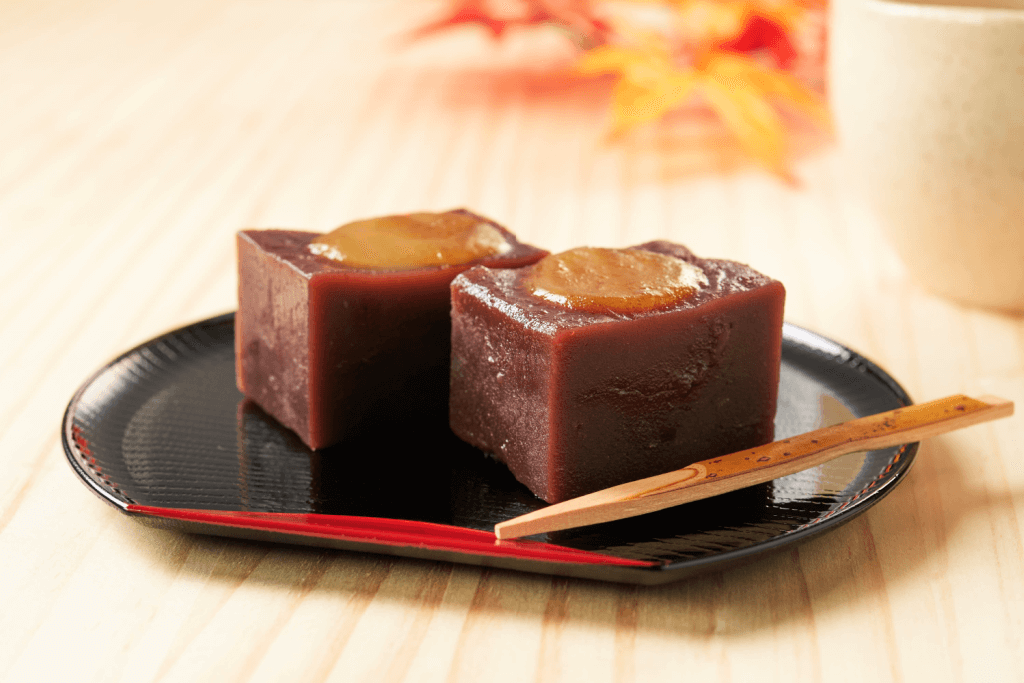
Yokan comes in all sorts of shapes and colors. Sometimes, they even wrap it in an edible wrapper made from leaves or paper. The two most common types are neri yokan, smooth and firm, and mizu yokan, softer and more jelly-like. Different kinds of yokan are sweet in different ways, so you can find one that suits your tastes.
Dorayaki is a Japanese pancake sandwich that’s famous for using azuki beans. Sweet azuki bean paste fills the middle of two fluffy cakes that look like pancakes. This dessert is loved by both kids and adults in Japan.
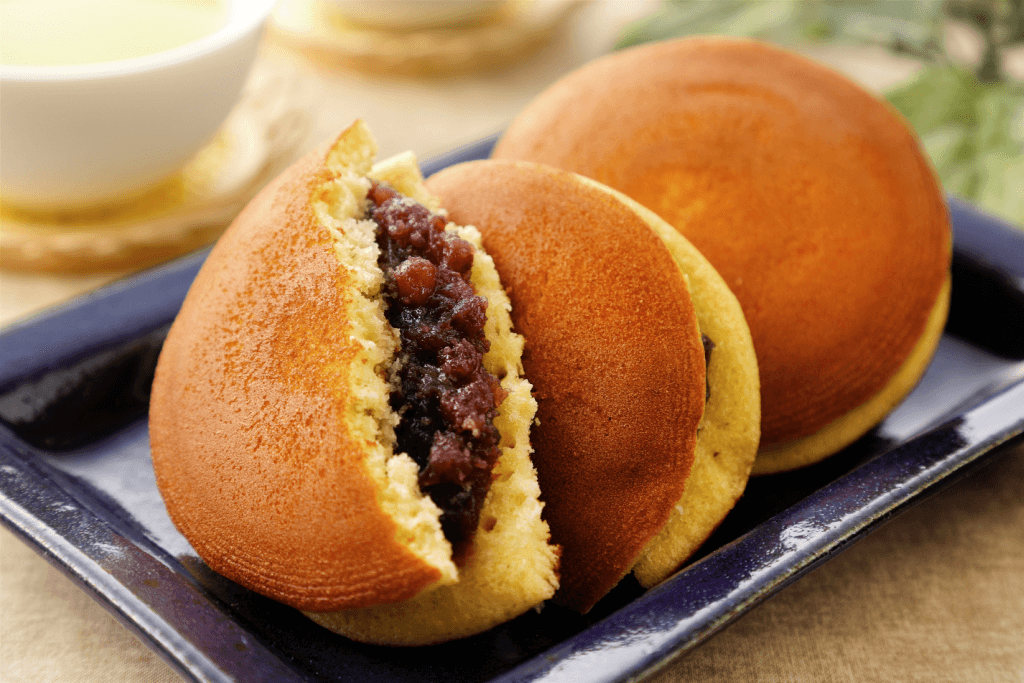
The ingredients include flour, eggs, sugar, and something to make them rise and be fluffy. That gives them a soft and slightly sweet taste. ANKO is the name for azuki bean paste that is made by cooking azuki beans with sugar until they’re smooth and sweet. Putting a good amount of anko in the middle of both pancakes makes them soft and spongy, and the sweet and earthy azuki bean paste tastes great with them.
Dorayaki is not just delicious but has a unique feeling of nostalgia and comfort. You can find it in many Japanese bakeries and convenience stores. So it’s easy to grab and enjoy whenever you want a sweet treat with a touch of tradition.
A popular Japanese treat called odango, which is also written as dango, is made with azuki beans. It is similar to dorayaki and yokan. These small, round dumplings that use sticky rice flour are often served on sticks for easy eating. One of the most loved versions has a yummy sweetened azuki bean paste coating.
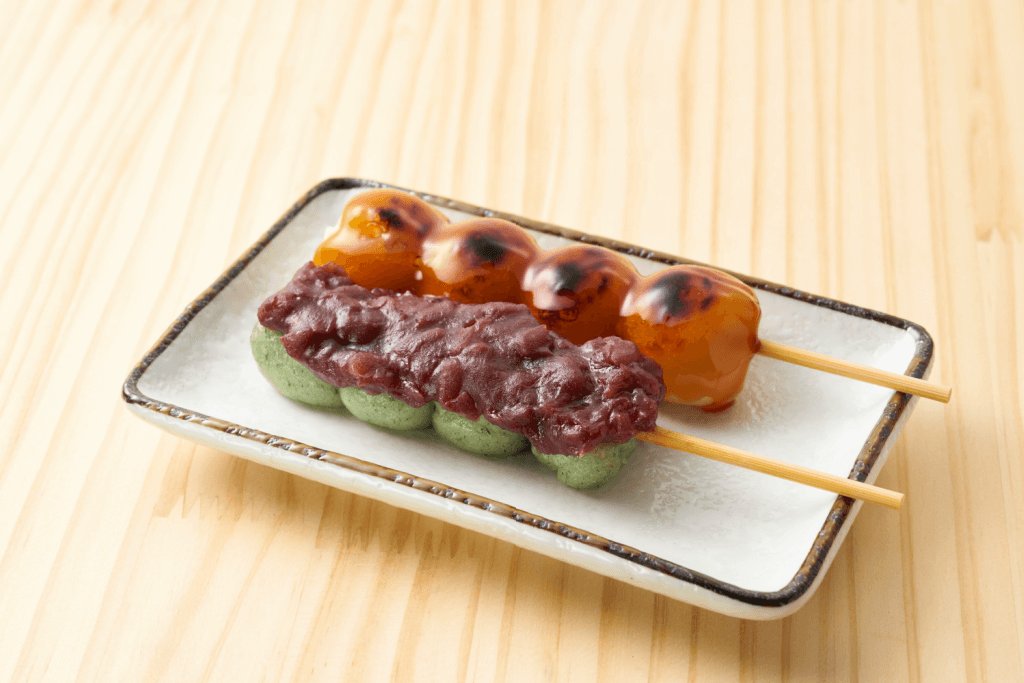
Sticky rice flour and water are mixed together to make a dough that is then rolled into small dumplings. These dumplings are usually boiled or steamed until they turn soft and chewy. They are cooked and then covered in a sweet syrup made of sugar and sometimes soy sauce. This gives them a taste that is both sweet and savory. Some kinds have a smooth, sweet red bean paste covering that makes the sweetness taste rich and earthy.
People enjoy odango all year round in Japan, especially during festivals and celebrations. It is a favorite dessert for people who love the unique taste of azuki beans in Japanese food because it is chewy and tastes great.
Taiyaki’s name comes from “tai,” meaning sea bream, and “yaki,” meaning grilled or baked. While traditional taiyaki can have various fillings, one of the most beloved choices is sweet azuki bean paste. The batter for taiyaki is like the batter for pancakes or waffles. It makes an outer shell that is crispy but a little chewy and shaped like a fish.
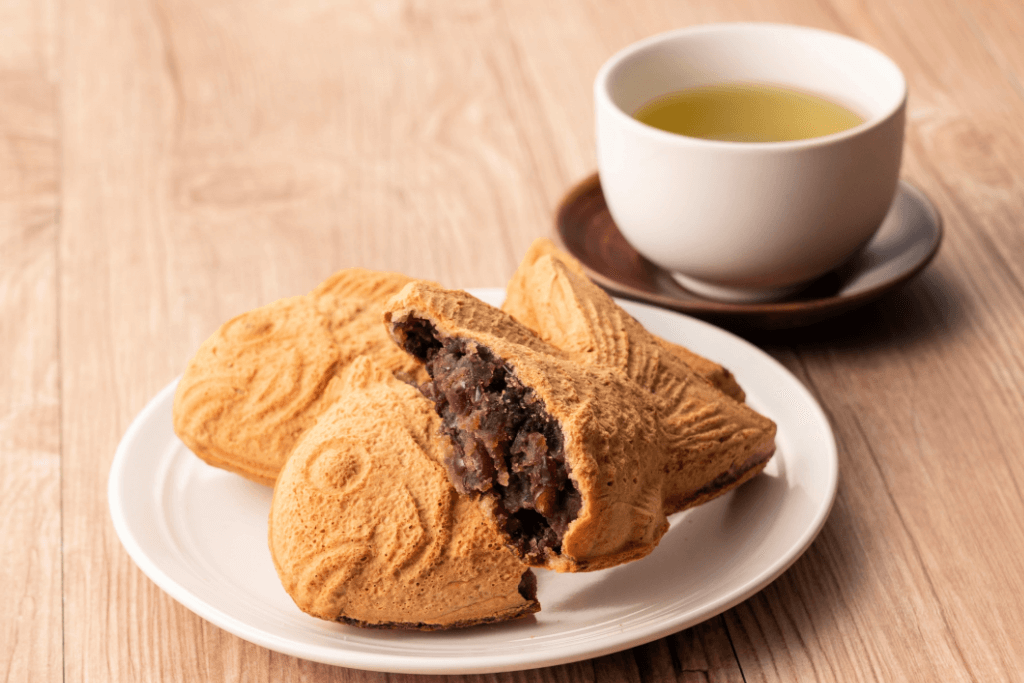
These crispy fish-shaped pastries are typically cooked on a grill. Once they turn a perfect golden brown, they are filled generously with sweet azuki bean paste. The result is a delicious mix of textures: the azuki bean paste’s smooth, sweet center and the crispy, warm outside.
Taiyaki isn’t just delicious; it’s also famous for its fun and eye-catching shape. This makes it a popular street food snack and a favorite at festivals and fairs. In addition to the traditional azuki bean filling, you can now find modern versions with chocolate, custard, or even cheese fillings. These offer a wide range of flavors while staying true to the original recipe.
A beloved Japanese treat called daifuku is made of chewy, glutinous rice flour dough and sweet fillings, often with the beloved azuki bean paste. There are many shapes and sizes of these treats, but the classic round mochi with a tasty azuki bean filling is one of the most loved.
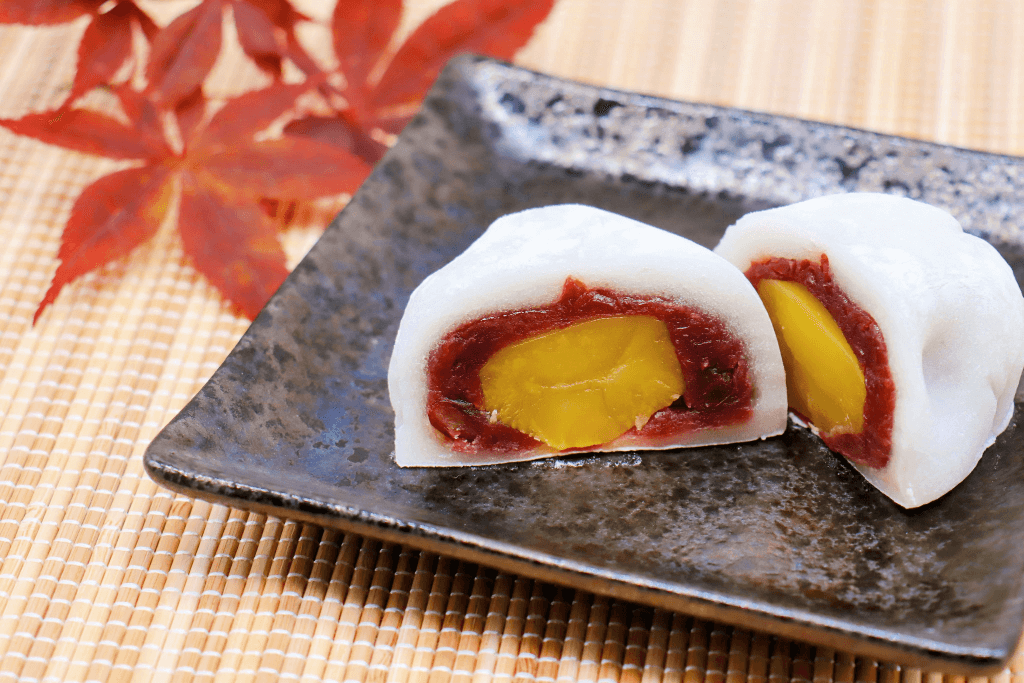
To create daifuku, chefs prepare a soft, elastic dough from glutinous rice flour, sugar, and water. Then, they roll it out and fill it with sweet, velvety azuki bean paste. The chewy outside and smooth, rich inside make for a great contrast. Daifuku has a light cornstarch or potato starch coating to enhance its texture and prevent sticking.
Daifuku has many flavors and fillings, from the classic azuki bean paste to newer ones like strawberry, ice cream, or matcha (green tea). People in Japan eat these tasty treats all year long, and they’re now popular all over the world thanks to their unique mix of tastes and textures. They’re a must-try for anyone with a sweet tooth and an appreciation for Japanese cuisine.
Visit Sakuraco if you want to enjoy even more treats with azuki beans. Every month, this subscription box brings you tasty Japanese snacks and teas straight from Japan.
What are azuki beans?
Azuki beans are small, reddish-brown beans that have been important in Asian cooking for a long time. They come from East Asia and are prevalent in places like Japan, China, and Korea. Azuki beans are liked by many because they taste sweet and nutty, and they can be used in both sweet and savory dishes.

They’re often used in desserts like red bean paste for cakes and soups. Moreover, they can even be made into sweet treats like red bean ice cream and sweet bean porridge. Azuki beans aren’t just tasty; they’re also good for you and pair well with many dishes.
They are all red beans, which one is the right one for sweet red bean paste? How to make it? 红豆沙的做法
FAQ
What does red bean taste like?
What flavor is red bean ice cream?
What does red bean taste like in bubble tea?
What is the flavor of red bean mochi?
What does red bean paste taste like?
An essential filling for Chinese pastries and desserts, red bean paste tastes amazing when made at home. This recipe includes two classic versions. Red bean paste, known as Hong Dou Sha/红豆沙 in Chinese, is a sweetened paste made of adzuki beans (aka red beans), sugar and some fat of your choice.
Is red bean paste sweet?
Red bean paste is not naturally sweet by itself; it’s often mixed with sugar or honey to create that final flavor profile we know today as red beans. Red beans are not only healthy, but they’re delicious too. What Does Red Bean Paste Taste Like? Does Red Bean Paste Taste Good?
Are red beans sweet?
The beans have high levels of potassium, which is important for regulating the muscles and other bodily functions, including controlling heart rate. Red bean paste is not naturally sweet by itself; it’s often mixed with sugar or honey to create that final flavor profile we know today as red beans.
What are the different types of red bean paste?
There are four main types of red bean paste available on the market today: traditional Chinese red bean paste (豆沙), sweetened Korean-style red bean paste (紅豆漿), Japanese style thickened red beans (糊付きのお茶豆) and Japanese style thinned out beans (水付きのお茶豆). Each type has its unique texture and taste that may not appeal to everyone.
